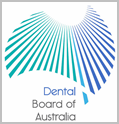
What is Gum Disease?
If your gums are red and inflamed, they may be affected by gum disease and will need attention to reverse that. In the early stages, correct brushing and flossing along with less sugary foods/drinks will bring your gums back to a healthy state. If the gum disease is more advanced, then you will need the help of a dentist.
When gums are healthy, they should appear pink and firm. Healthy gums should not bleed during cleaning.
Gingivitis
If bacteria isn’t removed from teeth regularly, over time the surrounding gums can become inflamed. This is known as gingivitis.
Inflamed gums can appear enlarged, red in color and may bleed more easily than healthy gums.
Correct brushing and flossing between the teeth, will help gums with gingivitis return to normal.
Periodontitis
Cigarette smokers, people with poorly controlled diabetes, and those who don’t take care of their teeth will have a greater risk of developing severe gum disease, called periodontitis.
Periodontitis causes bone around effected teeth to recede. The gums may recede as well. If the gums don’t recede, a space forms called a periodontal pocket.
Periodontitis can cause the teeth to move, allowing gaps to form. In cases like this, treatment from a dentist or periodontal specialist, is required.
Without treatment, affected teeth may become painful, loose, or even fall out.
How to avoid gum disease
Regular brushing and cleaning between your teeth is important in preventing and treating gum disease. Flossing is very important as your toothbrush can’t reach these areas. Reducing your intake of sugary food and drinks will also help.
Visiting your dentist every six months for a dental checkup is highly recommended to prevent problems and maintain oral health.
Avon Valley Dental Centre
59 Duke Street, Northam WA 6401

For appointments, information or dental emergencies:





